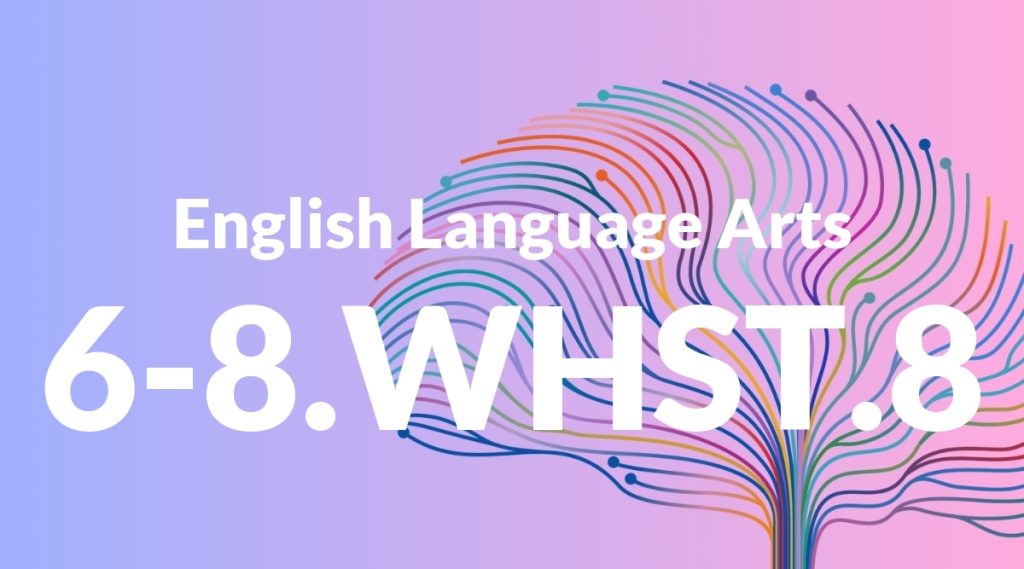Standard: 6-8.WHST.8 – Gather relevant information from multiple print and digital sources, using search terms effectively; assess the credibility and accuracy of each source; and quote or paraphrase the data and conclusions of others while avoiding plagiarism and following a standard format for citation.
Grade level: Grade 6-8
Subject: English Language Arts
Domain: Writing: History, Science & Technical Subjects
Teacher Overview
This standard emphasizes the importance of gathering information from various sources, assessing their credibility, and using that information ethically and effectively. It is crucial for developing critical thinking and research skills that students will use throughout their academic and professional lives. Before tackling this standard, students should be familiar with basic research methods and understand the importance of avoiding plagiarism.
Mastering this standard will prepare students for advanced research projects, enabling them to critically evaluate sources and present their findings in a well-organized, properly cited format.
Common Misconception 1
One common misconception is that all information found online is credible. This is incorrect because not all sources are reliable or unbiased.
Intervention 1
An effective intervention is to teach students how to evaluate the credibility of a source by looking at the author’s credentials, publication date, and cross-referencing with other reputable sources.
Common Misconception 2
Another misconception is that paraphrasing means just changing a few words in a sentence. This is incorrect because true paraphrasing involves rephrasing the entire idea in one’s own words.
Intervention 2
To address this, provide exercises that involve summarizing paragraphs in their own words and comparing their summaries with the original texts.
Prerequisite Knowledge
Students should understand basic research skills, including how to use a library and basic internet search engines. They should also have a foundational understanding of plagiarism and why it is important to avoid it.
Subsequent Knowledge
After mastering this standard, students will be able to conduct more advanced research projects, critically evaluate sources for bias and reliability, and present their findings in a well-organized and properly cited format.
Instructional Activities
- Conduct a research project on a historical event, using at least three different sources.
- Create a science report by gathering data from multiple scientific journals and websites.
- Write a technical essay on a chosen topic, ensuring all sources are credible and correctly cited.




